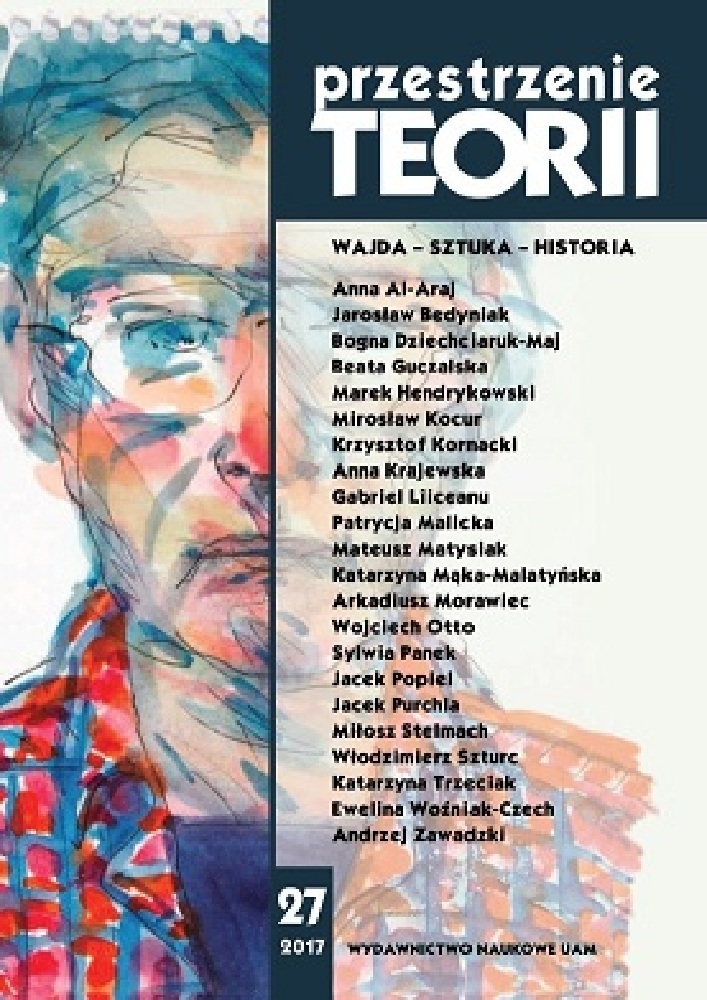Abstrakt
At the end of the 20th century in Kraków Andrzej Wajda began to implement his architectural vision. With the Manggha Museum of Japanese Art and Technology he created a counterpoint to the Wawel hill on the opposite bank of the Vistula. Another precedent was the intimate “Wyspiański 2000 Pavilion”, finally erected between 2005–2007 at plac Wszystkich Świętych. Through his architectural vision and creations he etched himself permanently in the identity of Kraków. Wajda proved that it is possible to understand the city as a creation, as a living work of art. His imagination and determination proved that this does not only need to be through the illusion of film.
Bibliografia
Fabiański M., Purchla J., Architektura Krakowa. Przewodnik, Kraków 2012.
Galeria Europa – Daleki Wschód, red. A. Oleśkiewicz, Kraków 2015.
Kraków – architektura i przestrzeń miasta u progu XXI wieku, red. A. Wyżykowski, Kraków 2010.
Manggha. Historia projektu, red. M. Urbańska, Kraków 2009.
Purchla J., Miasto jako dzieło sztuki, „Herito” 2016, nr 22–23 (2–3), s. 12-29.
Włodarczyk M., Architektura krakowska lat 1956–2000. Wybrane przykłady, Kraków 2013.
Licencja
Autorzy
Autorzy tekstów przyjętych do publikacji w czasopiśmie „Przestrzeniach Teorii” są zobowiązani do wypełnienia, podpisania i odesłania na adres redakcji umowy o udzielenie nieodpłatnej licencji do utworów, z zobowiązaniem do udzielania sublicencji CC.
Zgodnie z umową, autorzy tekstów opublikowanych w czasopiśmie „Przestrzeniach Teorii” udzielają Uniwersytetowi im. Adama Mickiewicza w Poznaniu niewyłącznej i nieodpłatnej licencji oraz zezwalą na użycie sublicencji Creative Commons Attribution-NonCommercial-NoDerivatives 4.0 International (CC BY-NC-ND 4.0).
Autorzy zachowują prawa do dalszego, swobodnego rozporządzania utworem.
Autorzy, którzy wykorzystują w swoim tekście cudze utwory (np. ilustracje, fotografie) proszeni są o dostarczenie do redakcji czasopisma zgodę na publikację od uprawnionych podmiotów.
Użytkownicy
Zainteresowani użytkownicy internetu uprawnieni są do korzystania z utworów opublikowanych po 2015 roku „Przestrzeniach Teorii” tylko w calach niekomercyjnych, pod następującymi warunkami:
- uznanie autorstwa - obowiązek podania wraz z rozpowszechnionym utworem, informacji, o autorstwie, tytule, źródle (odnośniki do oryginalnego utworu, DOI) oraz samej licencji;
- bez tworzenia utworów zależnych - utwór musi być zachowany w oryginalnej postaci, nie można bez zgody twórcy rozpowszechniać np. tłumaczeń, opracowań.
Do wszystkich tekstów opublikowanych przed 2015 r. prawa autorskie są zastrzeżone.
Inne
Uniwersytet im. Adama Mickiewicza w Poznaniu zachowuje prawo do czasopisma jako całości (układ, forma graficzna, tytuł, projekt okładki, logo itp.).
